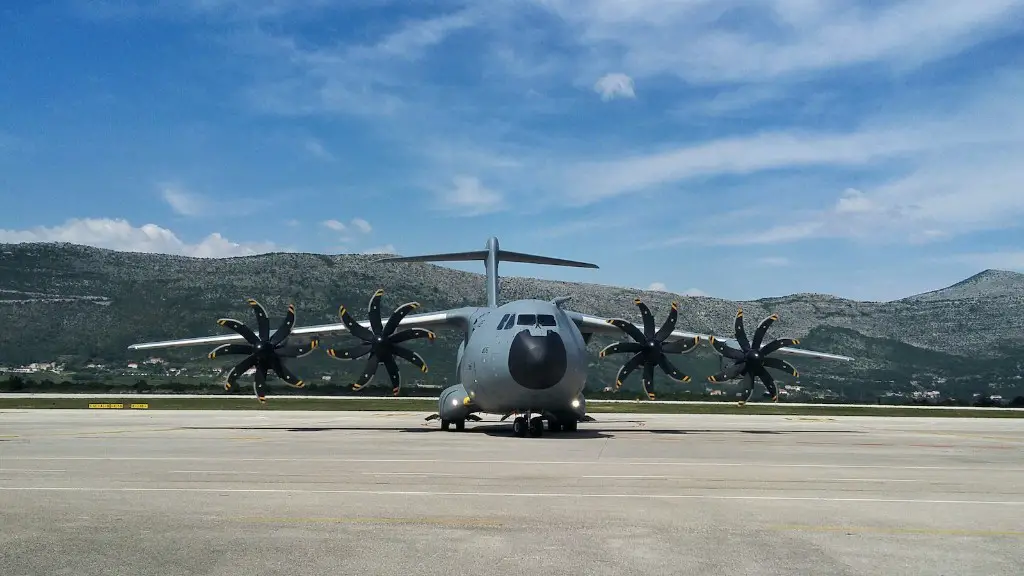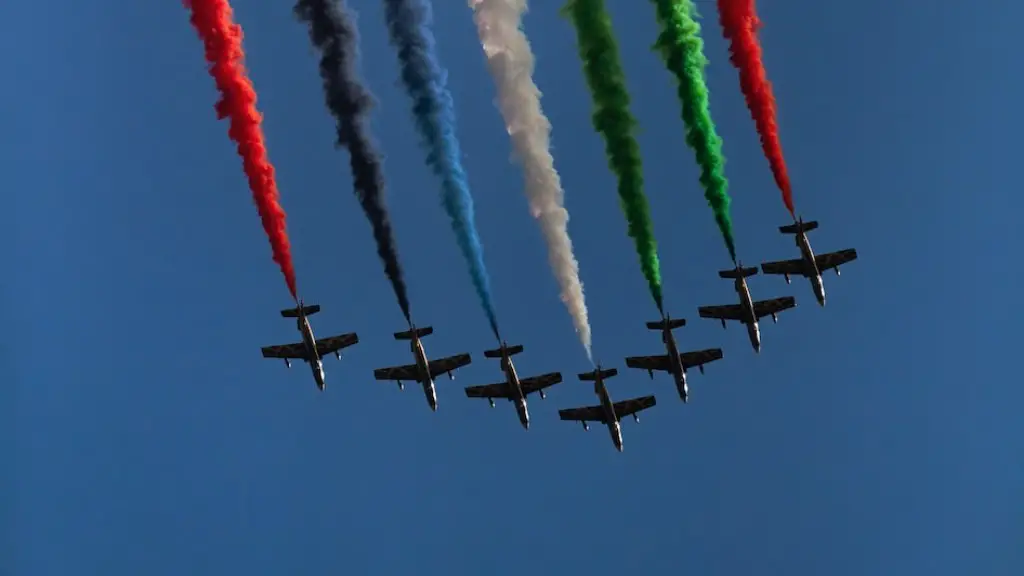The Chinese Army, which is the people’s Liberation Army, is the largest in the world. It has around 2.3 million personnel and is the world’s second-largest defense budget. The PLA is estimated to be the largest military organisation in terms of active combat personnel alone. It is comprised of four primary component forces – ground forces, air forces, navy, and the Rocket Force – and an array of reserve and auxiliary forces.
There are various theories to explain why the PLA is so large. Some expert opinions go so far as to suggest that the size of the Chinese military reflects its government’s determination to catch up with the West in terms of military technology. In the global arms transfer market, China has been increasing its military expenditure and the size of its army to become a major player.
Recent reports have revealed that the Chinese military has increased its combat readiness level by relocating to exercises promotion teams in northern and southern regions. These activities typically include ground combat, air-to-air combat, and air-to-surface combat. The Chinese Army has also developed aviation, intelligence, surveillance and reconnaissance capabilities, as well as the ability to deploy combat personnel and materiel within short periods of time.
In addition to its operational and personnel growth, the PLA has made impressive advances in military technology. By expanding its arsenal of weapons and equipment, the PLA has been able to deploy forces overseas for missions such as peacekeeping and anti-piracy operations. This is a sign that the PLA has adequate resources to support small-scale missions as well as large-scale campaigns.
The Chinese military is currently in the process of becoming an integrated and modern force. To this end, the PLA has implemented sweeping reforms, especially in the areas of logistics, abilities, training, and decision making. These reforms have allowed the PLA to remain up-to-date on new technologies, as well as to gain a better understanding of the international security environment.
For instance, the Chinese military has made major advances in the fields of artificial intelligence, autonomous robotics, and satellite navigation. It has invested heavily in developing a comprehensive military cyber security apparatus, which could be used to counter hostile cyber and information operations.
Overall, the Chinese Army is undoubtedly one of the largest and most advanced militaries in the world. Its sheer size and budget make the PLA a formidable force that must be reckoned with in any situation.
Economic Advantages of Chinese Army
The Chinese Army’s ever-growing size and power has provided the country with immense economic and security advantages. For instance, an increase in the size of the Chinese Army is associated with greater defence capabilities, something much sought after in a world of shifting security threats. This has allowed China’s economy to benefit from increased levels of economic efficiency, as defence costs are shared among the population.
The Chinese military’s presence also provides a great source of employment for individuals who are often highly skilled and educated. Indeed, the number of PLA personnel has grown sharply over the past few years, indicating an increase in the demand for military personnel of varying skill-sets. This makes the Chinese Army a major contributor to the GDP, as the cost of personnel and equipment can be accounted for both directly and indirectly.
Furthermore, the Chinese Army has become an integral part of the country’s economy. For example, many state-backed enterprises are heavily involved in the production and acquisition of Chinese arms, as well as the development of technology. This has enabled China to achieve a strong position in the global arms market, as well as allowing the PLA to gain access to sophisticated weapons. In addition, the growing PLA presence has led to the diversification of defence-related industries, creating new job opportunities and investments.
Finally, it can be argued that the Chinese Army plays an important role in maintaining internal stability and peace. This is especially evident at provincial level, where the PLA can act as an enforcer of the government’s policies. It also enables China to effectively deal with security threats from both internal and external origins.
Is the Chinese Army Too Large?
The size and power of the Chinese Army has raised questions among some individuals and organisations about whether it has become too large. Critics argue that the Chinese government has started to overextend itself in the international arena, especially in comparison to other countries whose defence spending is a fraction of the PLA’s budget. This has caused concern over the potential destabilising effects of China’s growing military capabilities.
However, other experts point out that while the PLA is large, it still lags behind other countries in terms of technology and training. This means that it is far from the ‘impenetrable force’ that some fear it to be. As a result, the PLA’s size and power should not be seen as a threat to global stability, as its combat capabilities are still relatively limited.
Yet, another argument is that the Chinese Army’s size and power have led to a feeling of complacency among some citizens. Residents of certain Chinese provinces have suggested that the government’s focus solely on the PLA has allowed other areas to be neglected, such as those related to public health, education, and welfare. This has led to a sense of frustration that the government is not doing enough to address public needs.
Overall, while the Chinese Army’s size can be seen as a source of strength and stability, it is important to consider the potential drawbacks as well. A large military is a major economic drain, and its expansion can lead to social and political imbalances. Thus, it is essential that the Chinese government keep the size of its Army in check, whilst continuing to ensure its high level of effectiveness.
How Does the Chinese Army Compare To Other Armies?
In comparison to other national armies, the PLA’s size is indeed extraordinary. At nearly 2.3 million active personnel, the Chinese Army is more than double the size of the United States Army, the second-largest military in the world. This number further rises when taking into account the 1.5 million Chinese Army Reserve personnel.
The Chinese Army is also larger than the armies of Russia, France, and India combined. For example, the Indian army has approximately 1.3 million personnel, while the French army has around 800,000 personnel. Furthermore, the Chinese Army is almost as large as the combined militaries of the United Kingdom, Germany, Italy, and Spain. This is a testament to the sheer power and size of the PLA.
In terms of the budget, the Chinese Army spends around USD 180 billion on defence annually, according to the Stockholm International Peace Research Institute (SIPRI). This is significantly higher than Russia, which is estimated to have a budget of around USD 60 billion a year. Moreover, China’s defence budget is far higher than any other countries in the Asia-Pacific region, reflecting the importance the Chinese government attaches to military might.
Ultimately, the Chinese Army is one of the largest and most advanced militaries in the world. Its size far outstrips that of any other nation, and its budget is correspondingly vast. Nevertheless, it is important to remember that other nations possess more advanced militaries, and to ensure that the PLA does not over-extend itself at the cost of other areas.
What Challenges Does the Chinese Army Face?
Despite its impressive size, the Chinese Army is not without its challenges. For instance, the two-decade-long reforms that began in the late 1980s had many unintended consequences, such as an increase in corruption and gaps in information-sharing systems. As a result, the PLA has been struggling to control its sprawling size and adapt to the ever-changing security environment.
In addition, the Chinese Army has also been accused of being unprepared for modern warfare. This is because much of its personnel lacks the advanced training and understanding necessary to effectively respond to new security threats. Furthermore, many of the reforms that the Chinese military has implemented have been blamed for creating a cumbersome bureaucracy and diluting operational efficiency.
The Chinese military has also failed to develop an integrated system that can provide unified command and control. As a result, there have been several cases of miscommunication and lack of coordination, leading to issues such as turf wars and power struggles between different branches of the PLA.
Finally, the PLA is also facing challenges related to recruitment and retention. It has been reported that although the Chinese Army is constantly looking for new recruits, it is failing to find enough individuals willing to join up. This is due to a combination of factors, including a lack of incentives and cultural stigma associated with military service.
In conclusion, the Chinese Army is undoubtedly a formidable force, but it is facing its fair share of challenges. It is essential that the PLA is able to adapt to the changing security environment and that it addresses the issues it faces in terms of personnel, infrastructure, and leadership. Only then will it be able to effectively use its size and power to protect China’s interests.
What Are the Implications Of The Chinese Army?
The expansion of the Chinese Army’s size and power has clear implications for both the region and the world. For example, it has caused a shift in the balance of power in the Asia-Pacific region. The sheer size of the PLA has caused a great deal of apprehension among countries in the region, such as India, Japan, and South Korea. This has been especially true since the emergence of the People’s Republic of China in 1949.
At the global level, there is much debate about the implications of the Chinese Army’s size and power. Some analysts warn that the PLA’s size and strength has the potential to undermine world security. This is especially true in light of US-China tensions, as the two countries are engaged in an ongoing geopolitical competition. Therefore, many nations have been increasing their own military capabilities or engaging in alliances in order to counterbalance China’s powerful position.
Furthermore, experts have also argued that China’s growing military size is part of a larger strategy to project its power into international affairs, as well as to protect its own interests in the region. In particular, the PLA’s presence in the South China Sea and the disputed territories in the Himalayas have been seen as indicators of China’s desire to expand its influence.
Overall, the size and power of the Chinese Army have caused much anxiety in the international community. It is not just a source of strength for China, but a source of concern for many countries around the world. In order to secure stability and peace, it is important that the international community take steps to ensure that the PLA’s growth does not lead to an unwanted arms race.
<





